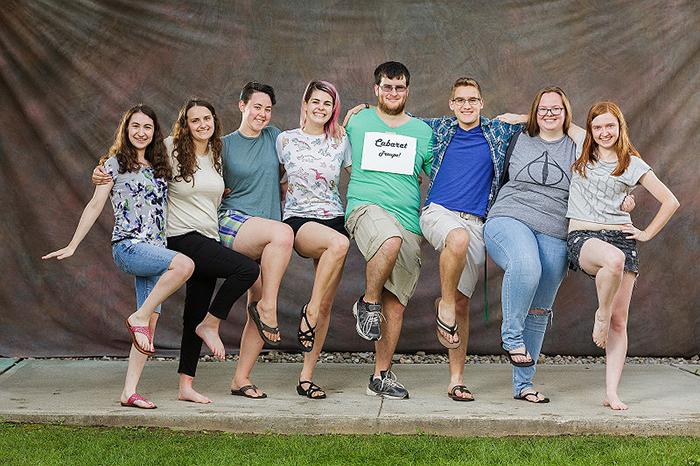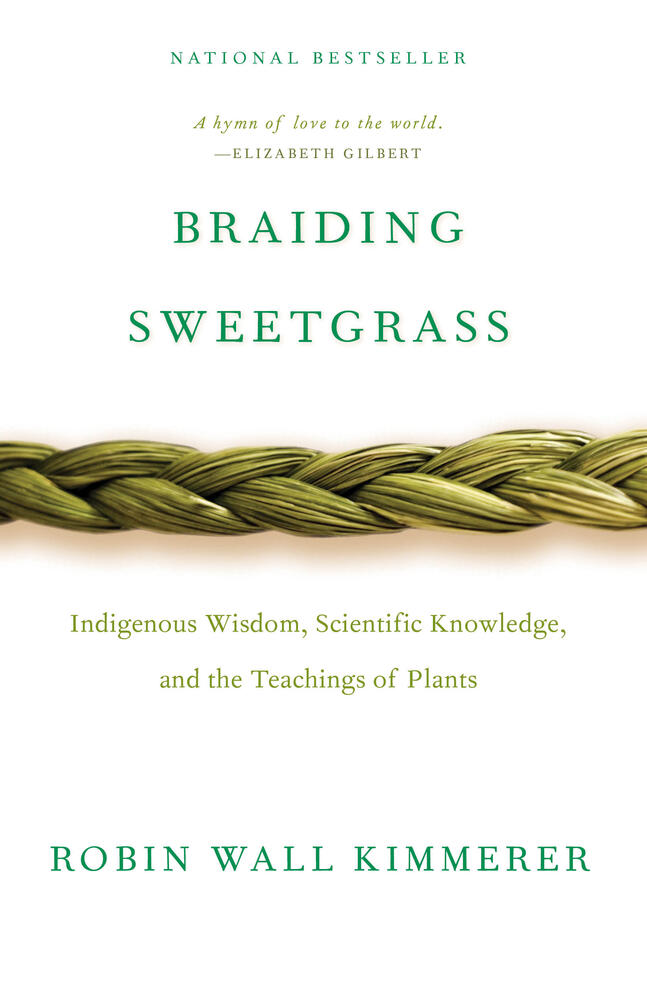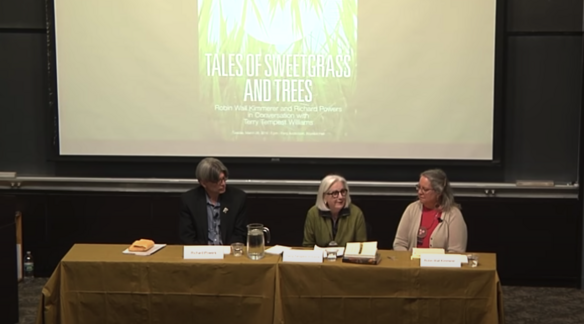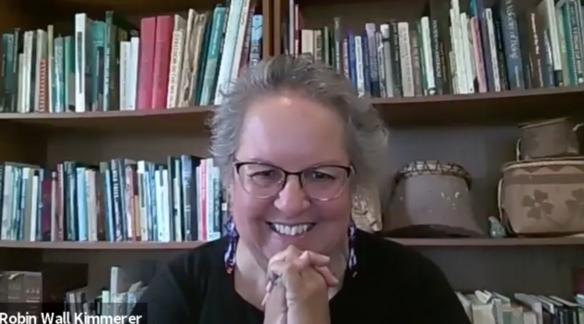## Can a Coyote Teach a Scientist? In the hallowed halls of Skidmore College, a curious experiment is taking place. Forget stuffy laboratories and sterile experiments. Here, wisdom gleaned from generations of Indigenous knowledge is being woven into the fabric of Western science. From observing the intricate dance of a hummingbird to understanding the interconnectedness of ecosystems, Skidmore’s faculty and students are embarking on a journey to bridge the gap between two seemingly disparate worlds. This isn’t just an academic exercise; it’s a movement towards a more holistic and sustainable future, one that recognizes the profound insights held within Indigenous traditions. Join us as we explore how Skidmore College is leading the charge in this groundbreaking collaboration.
Practical Applications and Implications

For Skidmore College students, applying indigenous wisdom in their daily lives can be a powerful way to cultivate a deeper understanding of the natural world and their place within it. One way to do this is by incorporating traditional ecological knowledge into their studies and daily routines. This might involve learning about the native plants and animals of the region, participating in outdoor activities such as hiking or camping, or engaging in community-based projects that promote environmental sustainability.
Another important aspect of applying indigenous wisdom is acknowledging and celebrating the reciprocal relationship between humans and the natural world. This can be achieved by recognizing the interconnectedness of all living beings and the importance of respecting and honoring the land and its inhabitants. By doing so, students can develop a greater sense of responsibility and stewardship towards the environment, and work towards creating a more sustainable future.

Interdisciplinary Collaboration
The potential for interdisciplinary collaboration between students from different majors and disciplines is vast and exciting. By combining their unique perspectives and skills, students can develop innovative solutions to complex environmental challenges. This might involve working with students from the sciences, humanities, and social sciences to develop a comprehensive understanding of the issue at hand, and to identify effective strategies for addressing it.
For example, a student in the biology department might work with a student in the environmental studies department to develop a plan for restoring a local wetland. Meanwhile, a student in the philosophy department might work with a student in the psychology department to explore the psychological and philosophical implications of humans’ relationship with the natural world. By bringing together students from different disciplines, we can foster a more holistic and interdisciplinary approach to environmental sustainability.
- Develop a deeper understanding of the natural world and their place within it
- Cultivate a sense of responsibility and stewardship towards the environment
- Foster a more holistic and interdisciplinary approach to environmental sustainability

The Future of Interdisciplinary Learning
Skidmore College is committed to fostering a diverse and inclusive community that values and celebrates the unique perspectives and experiences of all students. This commitment is reflected in the college’s efforts to promote interdisciplinary learning and collaboration, as well as its support for student clubs and organizations that promote social change and environmental sustainability.

Student Clubs and Organizations
Student clubs and organizations play a vital role in driving innovation and social change at Skidmore College. These groups provide students with opportunities to develop their skills and knowledge, as well as to connect with like-minded individuals who share their passions and interests.
- The Student Government Association (SGA) and The Office of Leadership Activities work in collaboration to support the efforts of nearly 100 registered student clubs
- Leadership Activities advises student organizations, sets policy and distributes funds, while the SGA provides much of the funding allocation and political representation for these groups
By getting involved in student clubs and organizations, students can develop their leadership skills, build their networks, and make a positive impact on the world around them. Whether it’s through rehearsing a routine for the Stompin’ Soles, raising funds for local and national charities, DJing at WSPN or hosting an outdoor adventure with Outing Club, Skidmore students are constantly utilizing their creativity and skills to build their collective future.

Indigenous Wisdom Meets Western Science
Robin Wall Kimmerer, a botanist and member of the Citizen Potawatomi Nation, has written extensively on the intersection of indigenous wisdom and Western science. In her book, Braiding Sweetgrass, she explores the ways in which traditional ecological knowledge can inform and enrich our understanding of the natural world.
Kimmerer’s work is a powerful reminder of the importance of acknowledging and respecting the knowledge and perspectives of indigenous peoples. By listening to and learning from indigenous wisdom, we can gain a deeper understanding of the interconnectedness of all living beings, and develop a more sustainable and equitable approach to environmental sustainability.
As Kimmerer notes, “the awakening of a wider ecological consciousness requires the acknowledgment and celebration of our reciprocal relationship with the rest of the living world. For only when we can hear the languages of other beings will we be capable of understanding the generosity of the earth, and learn to give our own gifts in return.”
- Indigenous wisdom can inform and enrich our understanding of the natural world
- Traditional ecological knowledge can provide valuable insights into the interconnectedness of all living beings
- Respecting and honoring indigenous knowledge and perspectives is essential for promoting environmental sustainability
Conclusion
Conclusion: Bridging the Gap between Indigenous Wisdom and Western Science
As we conclude our exploration of the remarkable collaboration between Skidmore College and Indigenous communities, it’s clear that the intersection of traditional knowledge and Western science holds immense potential for innovation and progress. The article has highlighted key points, such as the development of the Indigenous Science and Sustainability Program, which seeks to revitalize Indigenous knowledge and practices in the face of climate change. We’ve also seen how Skidmore’s commitment to decolonizing the academic curriculum has sparked important conversations about the role of Indigenous voices in shaping our understanding of the world.
The significance of this convergence cannot be overstated. By integrating Indigenous wisdom into Western scientific frameworks, we can develop more comprehensive and inclusive solutions to global challenges like climate change, social inequality, and environmental degradation. This synergy has far-reaching implications, from informing policy and decision-making to empowering marginalized communities and promoting intercultural understanding. As we move forward, it’s essential that we continue to prioritize the value of Indigenous knowledge and perspectives, recognizing that they hold a wealth of insights and innovations that can benefit us all.
As we embark on this bold new path, we’re reminded that the future of science, sustainability, and social justice lies at the intersection of cultures and perspectives. By embracing the wisdom of Indigenous communities and the rigor of Western science, we can co-create a more just, equitable, and thriving world. As the great Indigenous leader, Winona LaDuke, once said, “The future is not something that we enter, but something that we create.” Together, let’s create a future that honors the wisdom of the past, the diversity of the present, and the resilience of the human spirit.
